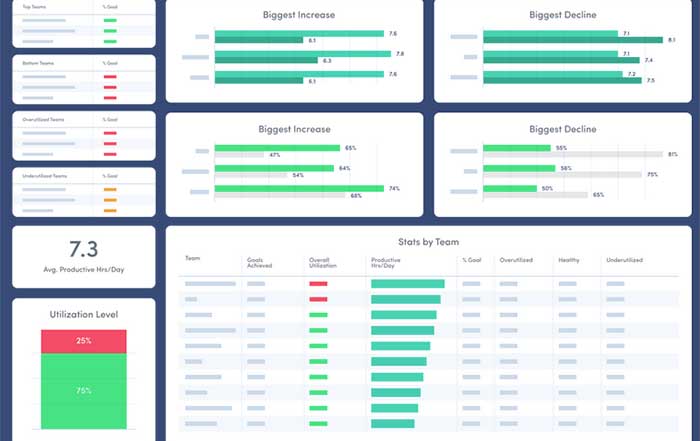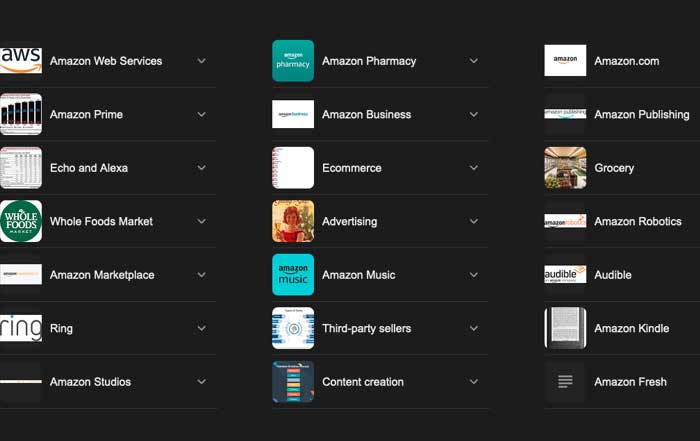In the ever-evolving financial landscape, global banks remain the backbone of international commerce, economic stability, and technological innovation. These institutions not only manage trillions in assets but also shape global financial trends, influence monetary policy, and set the pace for digital transformation in finance. The top 10 global banks of 2025 are no longer just financial institutions; they are vast ecosystems that integrate artificial intelligence, sustainability strategies, and digital banking platforms to serve billions of customers across continents.
The globalization of finance has made banks more interconnected than ever. From New York to Shanghai, and from London to Zurich, these financial giants have established a presence that transcends borders. As fintech disruptors, blockchain innovators, and neobanks challenge the old order, traditional banks have responded by evolving faster, embracing technology, and redefining their role in society.
Learn more about global business and finance.
The Evolution of Banking: A New Era of Financial Leadership
The banking industry has experienced a fundamental transformation in the past decade. The financial crises of the early 21st century forced major banks to prioritize risk management and regulatory compliance, while digital innovation has demanded new strategies to attract and retain tech-savvy customers. Today’s leading banks are a fusion of legacy expertise and technological prowess.
Artificial intelligence and data analytics have become the foundation for decision-making, credit scoring, fraud detection, and personalized financial services. The integration of AI-driven platforms allows banks to predict customer needs and optimize financial products. Institutions such as JPMorgan Chase, HSBC, and Bank of China are pioneering advanced machine learning applications in areas such as portfolio management, cybersecurity, and real-time cross-border payments.
Explore insights on artificial intelligence in finance.
1. JPMorgan Chase & Co. – The Undisputed Financial Leader
As of 2025, JPMorgan Chase & Co. stands as the largest bank in the world by market capitalization and total assets under management. Headquartered in New York, the bank continues to dominate the global financial landscape with assets exceeding $4 trillion. Its diversified operations span consumer banking, commercial banking, investment banking, and asset management, providing financial services to over 60 million households globally.
Under the leadership of Jamie Dimon, JPMorgan has strategically balanced innovation with stability. Its Onyx blockchain platform has revolutionized interbank settlements, while its AI research division is setting benchmarks in algorithmic trading and risk analytics. The firm’s proactive sustainability initiatives have also aligned it with global ESG standards, as it aims to finance more than $2.5 trillion in sustainable projects by 2030.
For deeper perspectives on corporate finance, visit investment insights.
2. Industrial and Commercial Bank of China (ICBC) – Asia’s Financial Giant
The Industrial and Commercial Bank of China (ICBC) continues to rank as the world’s largest bank by total assets, a position it has held for more than a decade. With assets now surpassing $5 trillion, ICBC’s scale is unmatched. Its dominance in both domestic and international markets has solidified China’s influence in global finance.
ICBC’s strategy emphasizes technological innovation and global expansion. The bank’s use of AI-driven credit risk assessment systems and its early adoption of blockchain for trade finance have enhanced its operational efficiency. Moreover, ICBC plays a critical role in supporting China’s Belt and Road Initiative, financing large infrastructure projects across Asia, Africa, and Europe. The bank’s integration of green financing programs further reflects China’s national goal to achieve carbon neutrality by 2060.
Discover how banks influence global economic trends at economy insights.
3. Bank of America – Reinventing the Future of Retail and Digital Banking
Bank of America (BofA) remains a pillar of stability and innovation in the United States. As of 2025, the bank has leveraged advanced technologies to transform customer experiences through AI-based personal finance tools and integrated digital banking platforms. Its Erica virtual assistant, now serving over 35 million users, is one of the most successful AI applications in global retail banking.
BofA’s commitment to sustainability is another defining feature. It continues to lead in sustainable finance, with over $500 billion allocated to climate and social impact projects. The bank’s strong performance across investment banking and wealth management divisions has made it one of the most profitable financial institutions in the world. Its efforts to foster inclusive growth through financial education and digital accessibility underscore its leadership in responsible banking.
Learn more about banking innovation.
4. China Construction Bank (CCB) – A Global Infrastructure Powerhouse
China Construction Bank (CCB) plays a critical role in global economic development. With assets exceeding $4.7 trillion, it remains one of the top banks driving infrastructure financing worldwide. The bank’s expertise in housing finance, urban development, and infrastructure lending has made it a vital player in both domestic and global growth initiatives.
In 2025, CCB continues to expand its digital ecosystem, offering blockchain-based smart contracts for construction financing and real estate investment. Its alignment with national strategies such as the Belt and Road Initiative and Made in China 2025 underscores its importance in supporting sustainable development. CCB’s international operations in Europe, Africa, and Southeast Asia have made it a central pillar of cross-border trade financing.
To explore more about global financial markets, visit tradeprofession.com/business.html.
5. Agricultural Bank of China – Financial Inclusion at Scale
The Agricultural Bank of China (ABC) stands out for its extensive rural banking network and its leadership in inclusive finance. With over 23,000 branches, it serves hundreds of millions of rural customers, facilitating agricultural modernization and regional development across China. In 2025, ABC’s focus on digital transformation has bridged the gap between rural populations and modern financial services through mobile banking applications and AI-based credit tools.
The bank’s international reach extends to financial markets in Europe and Africa, emphasizing green financing and sustainable agriculture. Its collaboration with fintech companies has enhanced transparency and efficiency in microfinance operations, aligning with the United Nations Sustainable Development Goals (SDGs).
Discover sustainable business models at sustainability insights.
6. HSBC Holdings plc – The Global Connector
HSBC, headquartered in London, remains one of the most globally integrated banks, operating across more than 60 countries. Its core strength lies in connecting international markets through trade finance, wealth management, and corporate banking. In 2025, HSBC’s balance sheet exceeds $3 trillion, driven by strong growth in Asia and the Middle East.
HSBC’s investment in digital transformation is reshaping the future of cross-border banking. Its digital payment platforms and AI-driven risk management systems have improved efficiency, while its sustainability strategy aims to allocate $1 trillion in climate finance by 2030. The bank continues to expand in fintech collaborations, particularly in blockchain-based trade settlements, positioning itself as a leader in the next generation of global finance.
To understand more about global trade finance, explore technology and innovation.
7. BNP Paribas – Europe’s Financial Anchor
BNP Paribas, based in Paris, remains the largest bank in the European Union and one of the most influential institutions in the global financial system. Its broad portfolio covers investment banking, asset management, and consumer finance. In 2025, the bank’s assets stand above $3.2 trillion, reinforcing its position as Europe’s financial anchor.
BNP Paribas has pioneered in green bonds and sustainable finance, becoming one of the top arrangers of ESG-linked instruments globally. Its strong presence in emerging markets, particularly in Africa and Southeast Asia, supports trade, infrastructure, and digital inclusion. Through advanced data analytics and AI-based portfolio management, BNP Paribas continues to modernize its services while maintaining a commitment to long-term stability.
For deeper perspectives on innovation, visit innovation insights.
8. Mitsubishi UFJ Financial Group (MUFG) – Japan’s Global Investment Power
Mitsubishi UFJ Financial Group (MUFG) stands as Japan’s largest financial institution and a leading force in Asia-Pacific investment banking. The group’s global operations extend to over 50 countries, supporting both corporate and retail clients. MUFG’s total assets exceed $3 trillion, with a growing emphasis on digital finance, AI-powered compliance, and international project financing.
MUFG’s strategic alliances, such as its partnership with Morgan Stanley, have strengthened its investment banking reach in the United States. The group’s continued investment in fintech startups and blockchain-based settlements demonstrates its commitment to innovation and modernization in global banking.
9. Citigroup Inc. – The Architect of Global Connectivity
Citigroup, one of the most recognized names in international finance, has long been synonymous with global reach and connectivity. As of 2025, Citigroup Inc. operates in more than 160 countries and territories, providing a diverse range of financial services including corporate lending, treasury and trade solutions, wealth management, and capital markets operations. With total assets exceeding $2.6 trillion, Citi remains a central institution in facilitating cross-border capital flows.
Under the leadership of Jane Fraser, the first woman to lead a major Wall Street bank, Citigroup has undergone significant restructuring aimed at streamlining operations and strengthening profitability. The bank’s renewed focus on core markets and its aggressive digitalization strategy have positioned it as a pioneer in technology-driven global banking. Its Citi Velocity platform provides clients with advanced analytics and data-driven market insights, while CitiDirect facilitates seamless global payments and liquidity management.
Citigroup’s continued investment in sustainable finance, committing over $1 trillion to green and social initiatives by 2030, aligns with the global financial sector’s increasing emphasis on ESG-driven strategies. In addition, Citi’s role in developing digital currencies and cross-border settlement solutions in partnership with central banks highlights its commitment to leading in the next era of financial technology. Learn more about how major institutions adapt to digital transformation on TradeProfession’s technology page.
10. Wells Fargo & Co. – Rebuilding Trust and Modernizing Finance
Wells Fargo, one of America’s oldest and most storied banks, continues its journey of rebuilding and transformation. After years of regulatory scrutiny, the bank has made significant strides in governance reform, risk management, and customer experience enhancement. As of 2025, Wells Fargo & Co. manages more than $2 trillion in assets, supported by a network that spans consumer banking, commercial lending, and wealth management.
The company’s modernization initiatives have redefined its digital banking capabilities, including the launch of AI-based financial planning tools and automated credit assessment systems. Its new strategy prioritizes operational efficiency, ethical conduct, and community reinvestment, reflecting its efforts to regain public trust. Moreover, Wells Fargo’s deepening commitment to sustainability—channeling billions into clean energy and green infrastructure—demonstrates that legacy institutions can evolve responsibly.
Its success story serves as a testament to corporate resilience and the power of cultural reform in the modern financial world. Those interested in executive leadership reform and long-term business ethics can explore more on TradeProfession’s executive page.
The Shifting Balance of Global Financial Power
The global banking landscape in 2025 is far more dynamic and interdependent than in previous decades. The dominance of Western financial institutions has gradually balanced with the rise of powerful Asian banks. China’s ICBC, CCB, and ABC are now among the largest institutions by total assets, illustrating the geopolitical shift of economic influence toward the East. Meanwhile, American giants like JPMorgan Chase and Bank of America continue to lead in innovation, investment banking, and digital transformation. European leaders such as BNP Paribas and HSBC serve as key connectors between continents, leveraging their geographic advantage and regulatory expertise.
This diversification of financial power reflects a broader evolution in the global economy—one that values sustainability, digital ecosystems, and inclusive finance. The interplay between established financial powerhouses and emerging digital competitors defines an era in which technology has become the ultimate equalizer. For a broader view of how innovation influences this transformation, visit TradeProfession’s innovation portal.
Technological Disruption and Digital Banking Ecosystems
Technology continues to redefine what it means to be a bank in 2025. The convergence of artificial intelligence, blockchain, and fintech partnerships has created a new paradigm where customer experience, transaction speed, and cybersecurity determine competitive advantage. AI algorithms are now instrumental in every aspect of banking—from fraud prevention and credit scoring to investment strategy and personalized service recommendations.
Banks are increasingly collaborating with fintech firms rather than competing with them. The emergence of open banking frameworks has enabled the seamless exchange of data between traditional banks and digital platforms, fostering a customer-centric approach. Financial institutions such as HSBC, MUFG, and Citigroup are investing heavily in API integration and digital wallets, bridging the gap between traditional financial systems and decentralized finance (DeFi).
Blockchain technology, once viewed with skepticism, has now become a core infrastructure element for secure, transparent transactions. The rise of central bank digital currencies (CBDCs), particularly in China, the EU, and the U.S., is reshaping how global settlements are conducted. For insights on how these technologies impact financial systems, readers can explore TradeProfession’s crypto hub.
Sustainability and ESG: The Moral Compass of Modern Banking
In 2025, environmental, social, and governance (ESG) principles are no longer optional—they are essential to global banking strategy. The largest financial institutions are now leading initiatives to support sustainable finance, carbon neutrality, and inclusive economic development. Banks such as BNP Paribas, HSBC, and JPMorgan Chase have developed specialized ESG divisions focused on green bonds, renewable energy funding, and social impact investing.
Investors and consumers alike increasingly demand transparency and ethical accountability. Regulators in major markets, including the European Union, United States, and Japan, have introduced stricter disclosure requirements for sustainability-linked financing. This shift has catalyzed innovation in how banks measure impact, with AI-driven models assessing environmental risks and tracking carbon footprints across portfolios.
As a result, ESG has evolved into both a moral and financial imperative. Banks that integrate sustainability into their core operations not only enhance their reputation but also ensure long-term profitability in a climate-conscious global economy. Readers can learn more about sustainable leadership and innovation at TradeProfession’s sustainability section.
Global Investment Banking: A New Competitive Order
The investment banking divisions of these global titans have undergone a radical transformation since 2020. The volatility of global markets, geopolitical uncertainty, and the surge in digital assets have forced banks to adapt. Firms such as Goldman Sachs, Morgan Stanley, JPMorgan Chase, and BNP Paribas now operate in an environment where speed, analytics, and cross-sector collaboration determine success.
Investment banks are also becoming central to the green transition, underwriting bonds for renewable energy and advising governments on sustainable infrastructure financing. Meanwhile, mergers and acquisitions in the fintech sector have accelerated as banks seek to acquire technological expertise. Citigroup and MUFG, for example, have invested in blockchain payment solutions and tokenization projects that aim to modernize capital markets.
The integration of quantum computing into financial modeling—an area explored by leading banks and research institutions—is another major leap forward. It promises to enhance predictive analytics and risk assessment capabilities at an unprecedented scale. To explore related insights, visit TradeProfession’s investment section.
Employment and Talent Transformation in Global Banking
The banking workforce of 2025 bears little resemblance to that of the past. Automation, data science, and digital transformation have reshaped job roles, creating a hybrid financial workforce where technology and human expertise coexist. While traditional teller and back-office roles have diminished, demand for data engineers, cybersecurity experts, and AI analysts has surged.
Banks are now recruiting from technology and analytics backgrounds, recognizing that their future competitiveness lies in human capital capable of harnessing digital tools effectively. Goldman Sachs, HSBC, and ICBC have established internal academies to upskill employees in areas such as coding, machine learning, and digital ethics. The global competition for fintech talent has become fierce, with institutions offering flexible work structures, remote collaboration, and lifelong learning initiatives.
For readers interested in how these workforce transformations shape modern careers, visit TradeProfession’s employment page.
Regional Perspectives: The Global Reach of Banking Power
North America
The U.S. remains home to some of the world’s most profitable and technologically advanced banks, including JPMorgan Chase, Bank of America, Citigroup, and Wells Fargo. These institutions continue to define the pace of global finance through leadership in fintech partnerships, venture capital, and ESG finance. The Federal Reserve’s regulatory stability, combined with a thriving digital ecosystem, has made the U.S. a fertile ground for innovation.
Europe
European banks, including BNP Paribas, Barclays, Deutsche Bank, and HSBC, play pivotal roles in connecting global capital flows. The continent’s focus on sustainability, regulation, and data privacy has set a new standard for responsible banking. The rise of the European Green Deal has spurred financial institutions to accelerate their climate financing initiatives and strengthen partnerships with renewable energy sectors.
Asia-Pacific
Asia’s banking scene is dominated by the major Chinese institutions—ICBC, CCB, and ABC—alongside Mitsubishi UFJ in Japan and DBS Bank in Singapore. Together, they embody the region’s rapid growth, technological innovation, and strategic alignment with national development policies. The integration of AI, big data, and fintech partnerships is fueling the next wave of Asian financial dominance.
Explore more about global and regional financial trends on TradeProfession’s global section.
The Future of Banking: Collaboration Between Tradition and Innovation
The world’s biggest banks are not just adapting to change—they are driving it. The future of banking will be shaped by collaboration between traditional institutions and digital disruptors. As fintechs and decentralized finance platforms gain influence, banks are responding by developing hybrid ecosystems that merge security, scalability, and user control.
Cross-sector innovation will define the next decade. The intersection of AI, quantum computing, and blockchain will enable predictive financial systems capable of real-time economic forecasting and seamless cross-border trade. Furthermore, as data sovereignty and privacy laws evolve, banks must balance global reach with local compliance—an area where strong governance and trust become decisive advantages.
Readers can explore more about financial innovation and global economic transformation at TradeProfession’s business and economy sections and https://www.tradeprofession.com/economy.html.
Conclusion: The Titans of Finance and the Road Ahead
The top 10 global banks of 2025 represent more than just size and capital—they embody the evolving spirit of modern finance. These institutions lead the world in integrating technology, sustainability, and human insight to shape a resilient, inclusive, and digital financial future. As they continue to navigate economic uncertainty, regulatory reform, and environmental responsibility, their influence extends far beyond balance sheets.
The future belongs to banks that balance innovation with integrity. Whether in New York, Tokyo, Beijing, or London, the financial titans of today are shaping the pathways of tomorrow’s economy—one transaction, one technology, and one transformation at a time.
For continued insights into global finance, visit TradeProfession.com.










